Explore Suraksan: A Perfect Blend of Nature, Culture, and Adventure
Nestled on the northeastern edge of Seoul, Suraksan Mountain (수락산) is a true hidden gem that offers a peaceful escape from the city’s fast pace. Often overshadowed by its more famous neighbor, Bukhansan, Suraksan boasts breathtaking natural scenery, well-marked trails, and a sense of tranquility that’s hard to find elsewhere. Whether you’re a seasoned hiker or just looking for an easy trail to enjoy nature, hiking in Seoul doesn’t get much better than Suraksan.
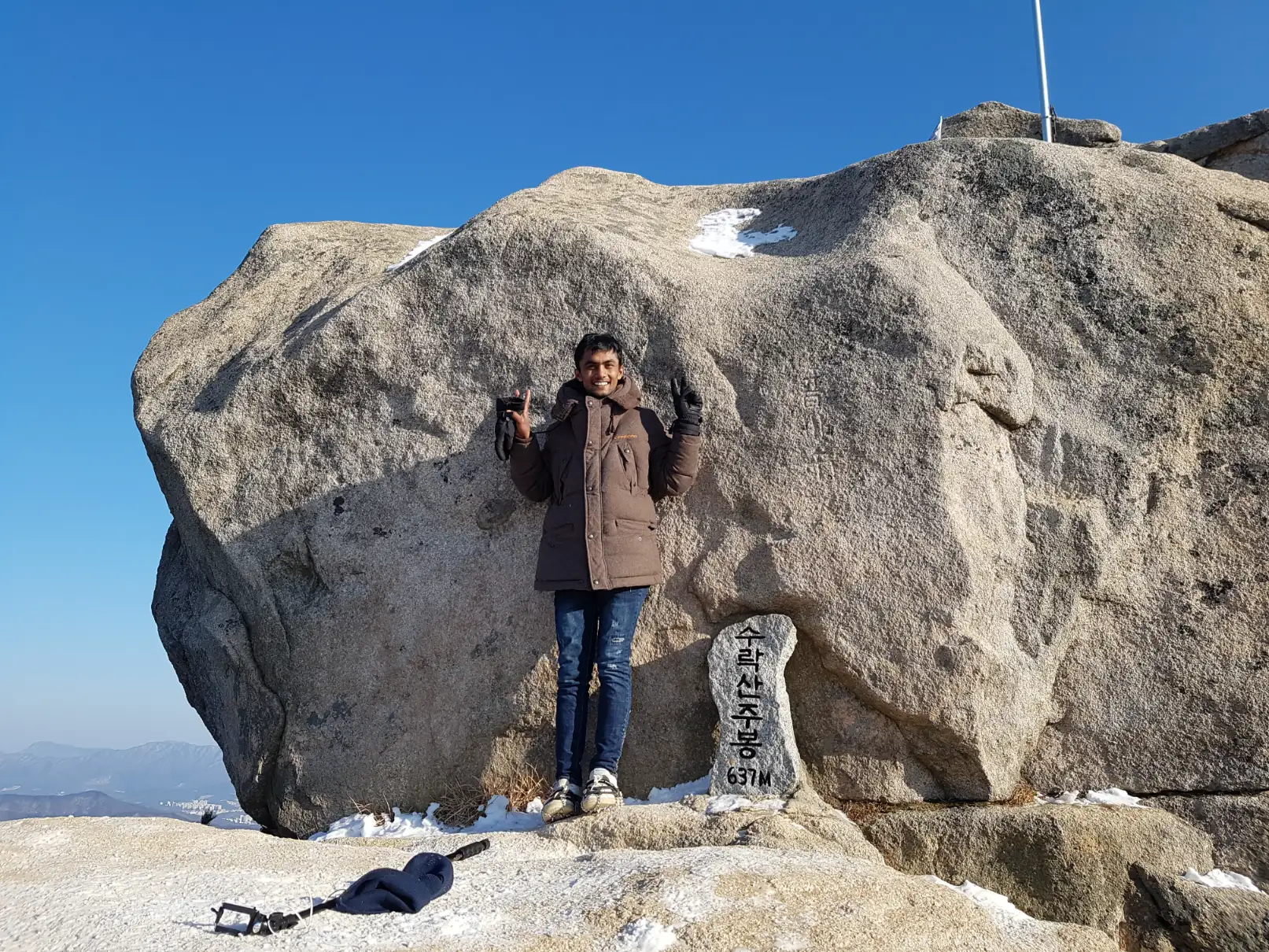
Compared to popular hiking spots like Dobongsan, Suraksan is quieter and less crowded, making it the perfect retreat for those seeking solitude. With rugged rock formations, lush forests, and scenic viewpoints where you can see the Seoul skyline, this mountain offers a rewarding experience for all. From challenging climbs to gentle walks, there’s something for everyone.
Why Hike Suraksan Mountain?
Suraksan isn’t just about hiking; it’s about experiencing a side of Seoul that many travelers overlook. The mountain features stunning panoramic views, including clear sights of Seoul’s sprawling skyline, nearby Bukhansan, and other surrounding peaks. Suraksan also offers cultural landmarks such as ancient temples hidden within its forested slopes, providing an opportunity to immerse yourself in Korea’s rich heritage while enjoying the outdoors.
For those who enjoy a mix of adventure and history, a visit to Suraksan is a must. The trails pass through picturesque rock formations and peaceful forest paths, making it an ideal spot for photographers and nature lovers alike.
Quick Facts About Suraksan
- Location: Northeastern Seoul, South Korea
- Highest Peak: Suraksan Peak (637m)
- Difficulty: Easy to moderate, with trails suitable for beginners and experienced hikers alike
- Ideal Visiting Times:
- Spring (March–May): Blooming cherry blossoms and azaleas
- Autumn (September–November): Vibrant foliage and crisp air
- Winter (December–February): Snow-dusted peaks and serene trails
- Highlights: Granite rock formations, tranquil temples, and panoramic views of Seoul and the surrounding mountains
- Accessibility: Easily reached by public transportation, with trailheads near subway stations
Iconic Peaks of Suraksan Mountain
Suraksan Mountain is home to several stunning peaks, each offering a unique hiking experience. Whether you’re seeking panoramic views, historical landmarks, or tranquil nature walks, Suraksan’s peaks provide something for every hiker.
Suraksan Peak (수락산 정상) – The Crown Jewel
Standing at 637 meters, Suraksan Peak is the highest point of the mountain and offers breathtaking panoramic views of Seoul, the Han River, and nearby mountain ranges such as Bukhansan and Dobongsan. The hike to the summit is as rewarding as the destination itself, featuring a combination of lush forest trails and impressive granite rock formations that make for a spectacular photo opportunity. Whether you visit at sunrise or sunset, the unobstructed views of the Seoul skyline are truly mesmerizing. The most popular route to Suraksan Peak is via Danggogae Station (당고개역), which offers a well-balanced mix of shaded forest paths and rocky sections. For those seeking a quieter trail, the Intersection Course via Uiam Temple (의암사) provides scenic beauty with fewer crowds. The trail difficulty is moderate, with some steep ascents requiring careful footing, making it a great choice for those looking for an enjoyable challenge.

Yeongchuksan Peak (영축산 정상) – A Historical Treasure
At 530 meters, Yeongchuksan Peak stands as a prominent secondary summit of Suraksan, offering a blend of natural beauty and cultural heritage. This peak is slightly easier to conquer compared to Suraksan Peak, making it ideal for families and casual hikers who want to enjoy a more relaxed hike. The dense forests and unique rock formations create a peaceful atmosphere, providing a perfect escape from the city’s noise. Yeongchuksan holds historical significance, being home to several ancient Buddhist hermitages that date back centuries. The Temple Path via Mangwolsa (망월사) is the best route to explore this peak, taking hikers through a serene environment filled with cultural landmarks such as the Mangwolsa Temple, a beautiful and historic Buddhist site nestled in the mountains. The trail is rated easy to moderate, making it accessible for hikers of all experience levels.
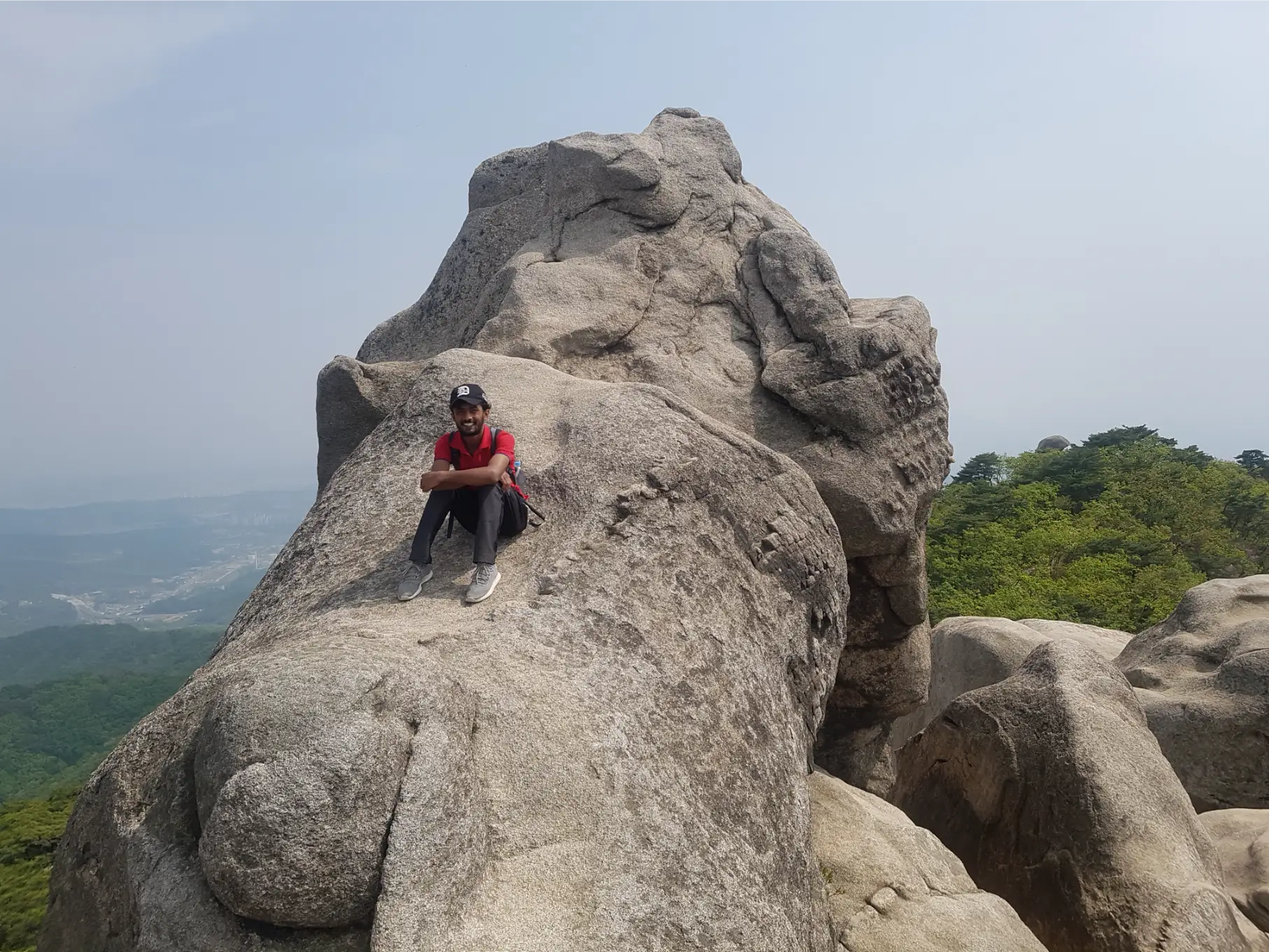
Obong Peak (오봉 정상) – The Photographer’s Paradise
With an elevation of 426 meters, Obong Peak, meaning “Five Peaks,” is a visual delight for nature lovers and photographers alike. This peak is known for its distinct granite formations that captivate visitors with their dramatic shapes and stunning landscapes. The lower elevation and gentle slopes make it an excellent choice for beginner hikers or those with limited time to explore. Obong Peak offers spectacular views of the surrounding valleys and forests, providing a peaceful and scenic backdrop for a relaxing hike. The Gugi Trail (구기 코스) is the most popular route to reach this peak, featuring an accessible and well-maintained path through serene woodlands. With an easy difficulty level, Obong Peak is perfect for a leisurely hike while still offering rewarding views and excellent photo opportunities.
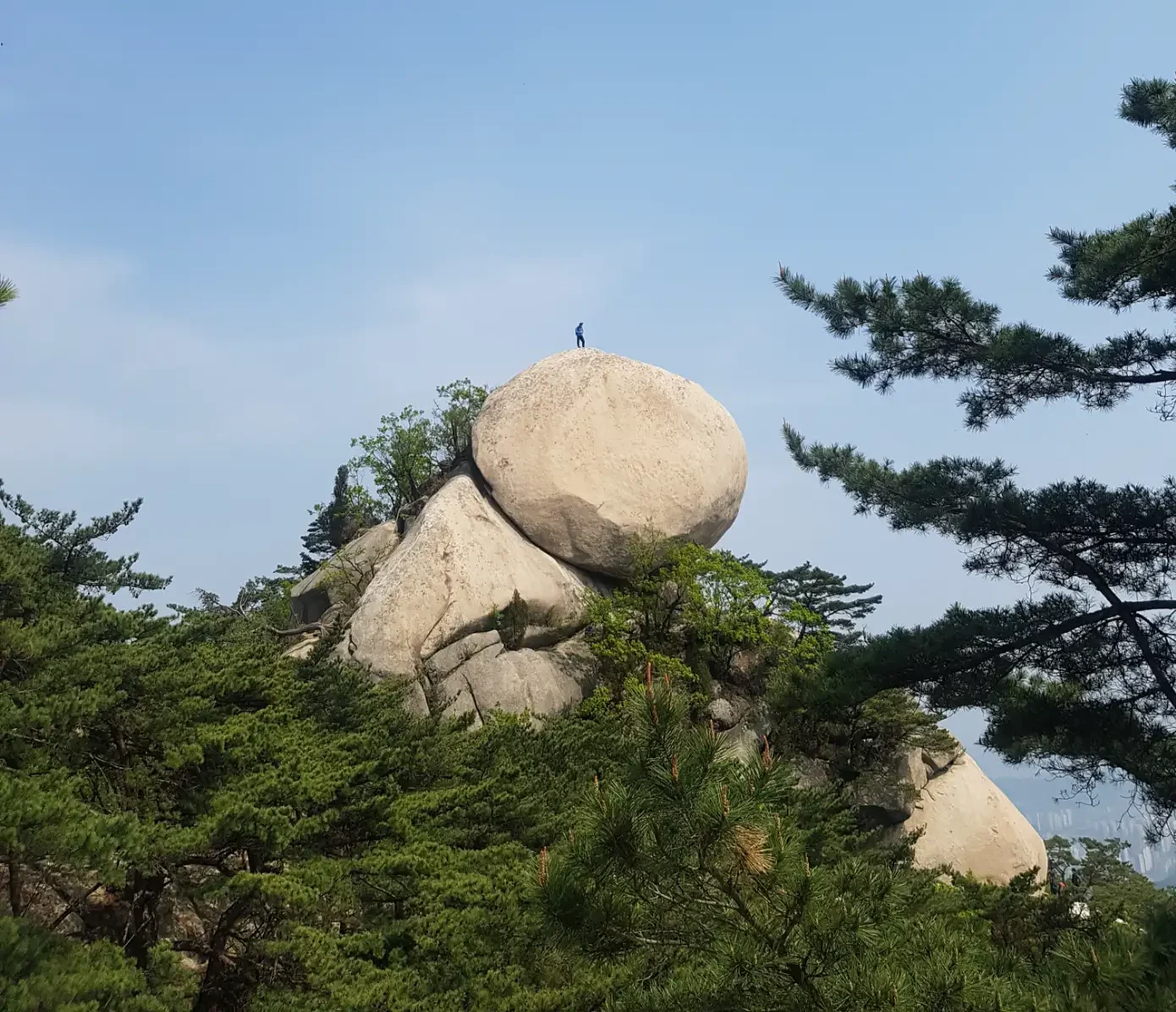
Each of these peaks contributes to the charm of Suraksan Mountain, offering diverse hiking experiences that cater to all skill levels. Whether you’re seeking panoramic vistas, cultural discoveries, or a simple outdoor escape, Suraksan has the perfect trail for you. Consider combining these hikes with other nearby attractions such as Bukhansan National Park, Lotte World Tower, or Gwangnaru Hangang Park to make the most of your adventure in Seoul.
Most Popular Trails in Suraksan (수락산 인기 등산로)
Suraksan (수락산) is a fantastic hiking destination in Seoul, offering a mix of scenic beauty, cultural landmarks, and well-maintained trails suitable for all experience levels. Whether you’re looking for an adventurous hike or a peaceful walk surrounded by nature, Suraksan has something for everyone. Here are two of the most popular trails that showcase the best of what this hidden gem has to offer.
1. Suraksan Main Trail (수락산 메인 코스)
Starting Point: Danggogae Station (당고개역, Subway Line 4)
Distance: 5 km (왕복)
Time Needed: 3–4 hours
Difficulty: Moderate
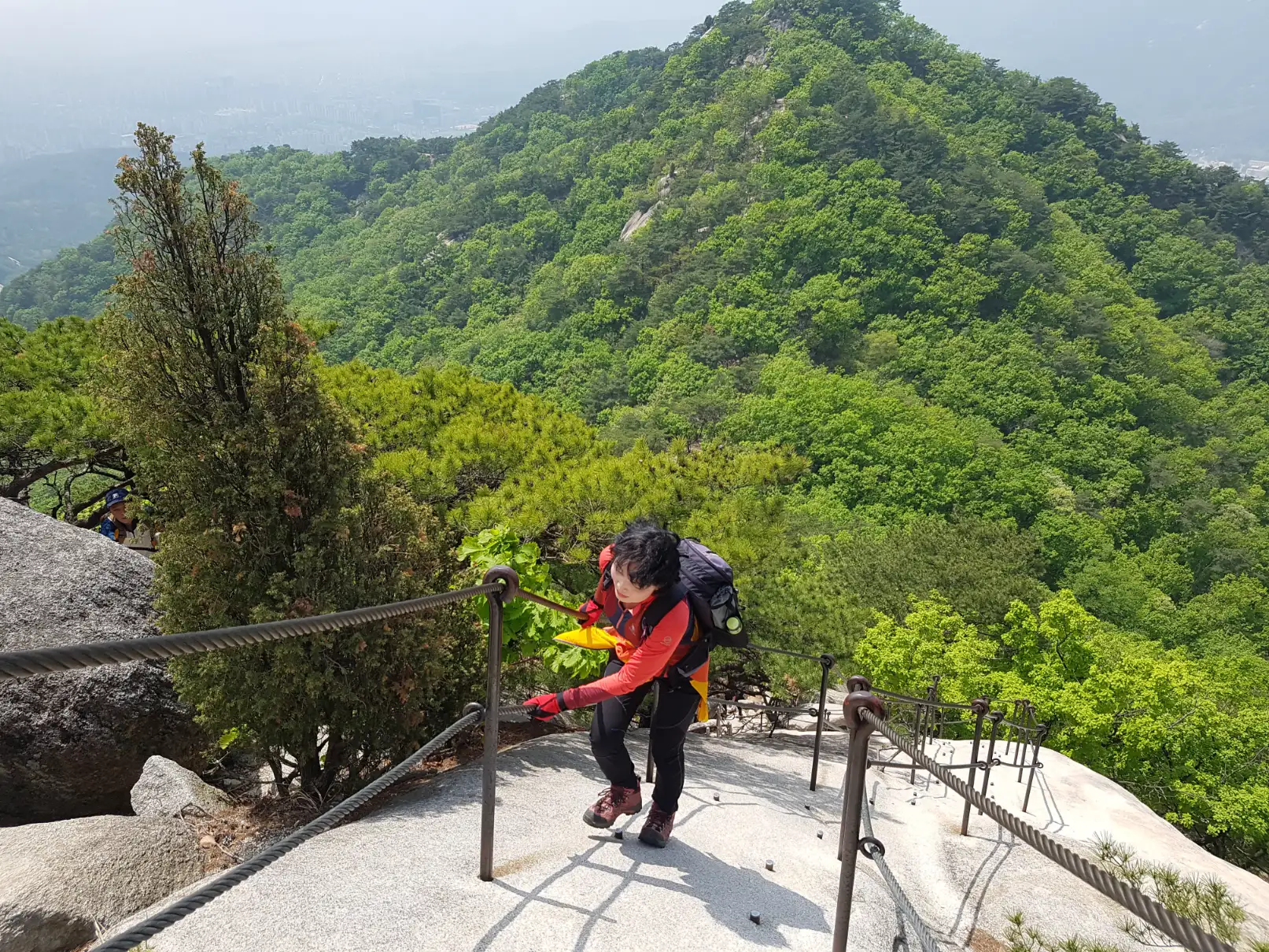
Trail Description:
The Suraksan Main Trail is the most popular route to the summit, offering a perfect blend of lush forests, rocky terrain, and breathtaking viewpoints. The trail starts with a gentle walk through serene woodland paths, gradually leading to steeper sections with rocky outcrops. Along the way, you’ll find several observation decks that provide panoramic views of Seoul, including the Han River and nearby mountains such as Bukhansan (북한산) and Dobongsan (도봉산). The final ascent to the peak is a bit challenging, but the stunning scenery at the summit makes every step worthwhile.
Highlights:
- Breathtaking 360-degree views of Seoul, including landmarks like Lotte World Tower and Namsan Tower.
- Serene forest paths teeming with wildlife, including native birds and squirrels.
- Beautiful granite rock formations, perfect for photography.
Tips:
- Wear sturdy hiking shoes with good grip, as the rocky sections near the summit can be slippery.
- Start your hike early in the morning to enjoy cooler weather and fewer crowds.
- Bring plenty of water, especially during the summer months, as the ascent can be physically demanding.
2. Mangwolsa Temple Trail (망월사 코스)
Starting Point: Mangwolsa Station (망월사역, Subway Line 1)
Distance: 4.2 km (편도)
Time Needed: 2.5–3 hours
Difficulty: Easy to Moderate
Trail Description:
The Mangwolsa Temple Trail is a scenic and culturally rich hiking route that takes you through lush forests to the beautiful Mangwolsa Temple, one of the most notable landmarks in the area. This peaceful trail features gentle inclines and occasional stone steps, making it accessible for all fitness levels. As you walk through the shaded paths, you’ll be surrounded by the sounds of nature and stunning views of the surrounding mountains. Once you reach the temple, you can take a break to explore its historic architecture and enjoy the calming atmosphere before continuing your journey.
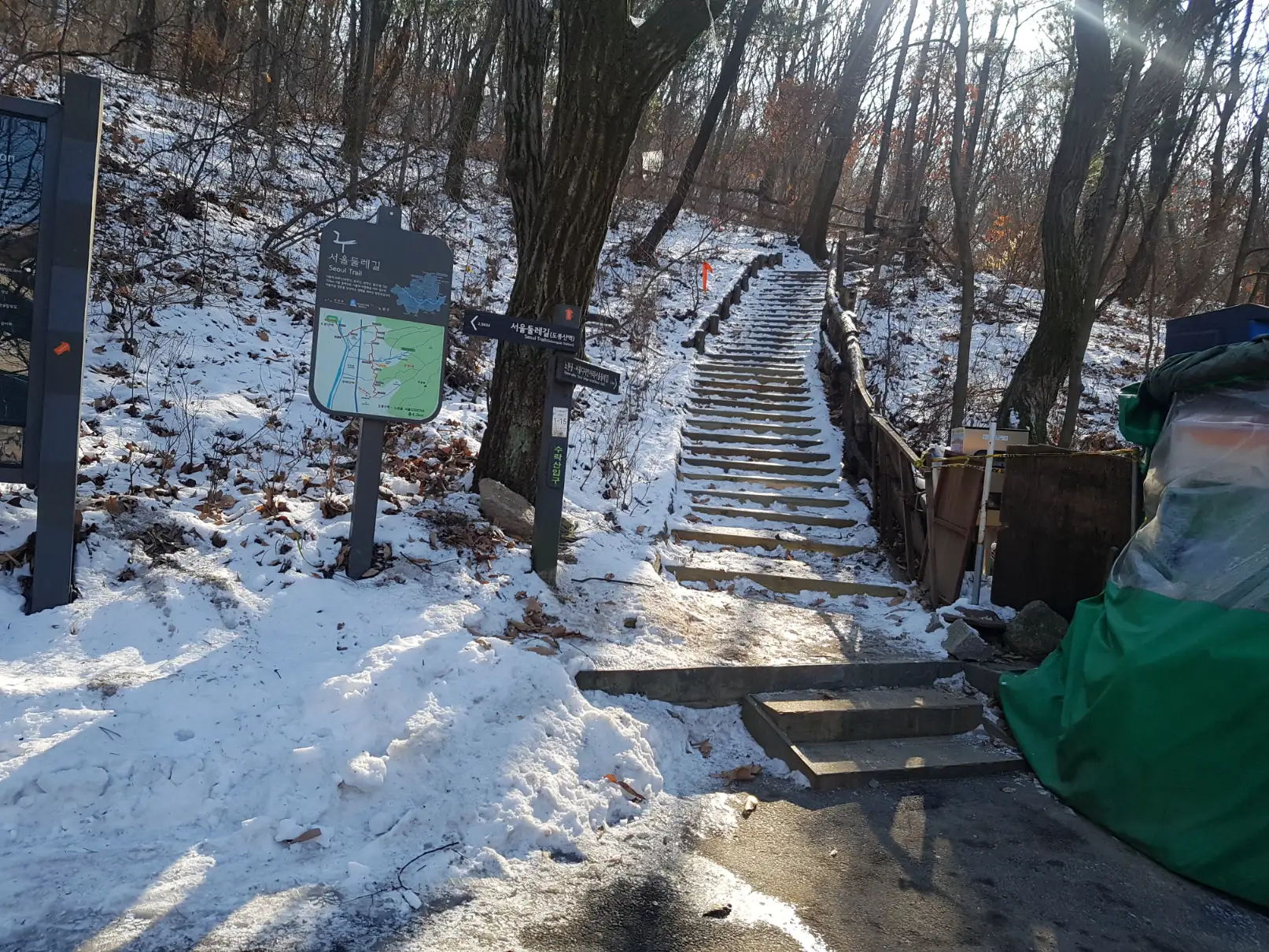
Highlights:
- The serene and spiritual ambiance of Mangwolsa Temple, a historic Buddhist site offering a place for reflection.
- Stunning views of the surrounding mountain ranges, especially vibrant during autumn.
- Peaceful forest paths lined with seasonal flowers and dense foliage.
Tips:
- Visit during early spring or late autumn to witness blooming cherry blossoms or colorful foliage.
- Don’t forget to bring a camera to capture the temple’s traditional Korean architecture against the mountain backdrop.
- Consider packing a light snack to enjoy at the temple grounds, where benches offer a perfect rest spot.
Both trails offer a fantastic way to explore Suraksan’s natural and cultural beauty, making them must-visit routes for anyone interested in hiking in Seoul (서울 등산). Whether you’re looking for a challenging climb or a peaceful cultural experience, Suraksan provides the perfect escape from the bustling city life.
Seasonal Tips for Visiting Suraksan (수락산 계절별 방문 가이드)
Suraksan (수락산) offers a unique hiking experience throughout the year, with each season bringing its own charm and challenges. Whether you’re drawn by blooming flowers in spring, lush greenery in summer, vibrant foliage in autumn, or serene snow-covered landscapes in winter, Suraksan provides an unforgettable escape from the city. Here’s a seasonal guide to help you plan your visit and make the most of your hike.
Suraksan Mountain in Spring (March–May)
Spring is a magical time to hike Suraksan, as the mountain bursts into life with colorful cherry blossoms and azaleas. The mild temperatures and refreshing breeze make it one of the most enjoyable seasons for outdoor activities. Popular trails such as the Mangwolsa Temple Trail (망월사 코스) are perfect for experiencing the delicate cherry blossoms that frame the temple grounds, while the Suraksan Main Trail (수락산 메인 코스) offers breathtaking forest scenery filled with vibrant spring colors. To avoid crowds, it’s best to start your hike early in the morning. Since mornings and evenings can still be chilly, wearing layered clothing is recommended to stay comfortable throughout the day.
Suraksan Mountain in Summer (June–August)
In summer, Suraksan transforms into a lush green oasis, providing much-needed shade under its dense forest canopy. The mountain streams offer a refreshing respite from the summer heat, making it an ideal destination for a cooling hike. The Uiam Course (의암 코스) is a great choice for its shaded paths and proximity to cool streams, while the Danggogae Loop Trail (당고개 순환 코스) takes you through scenic, forested routes. To beat the heat, it’s advisable to start early in the morning and avoid hiking during midday. Hikers should also carry plenty of water, wear breathable clothing, and apply insect repellent to ward off mosquitoes commonly found in the summer months.
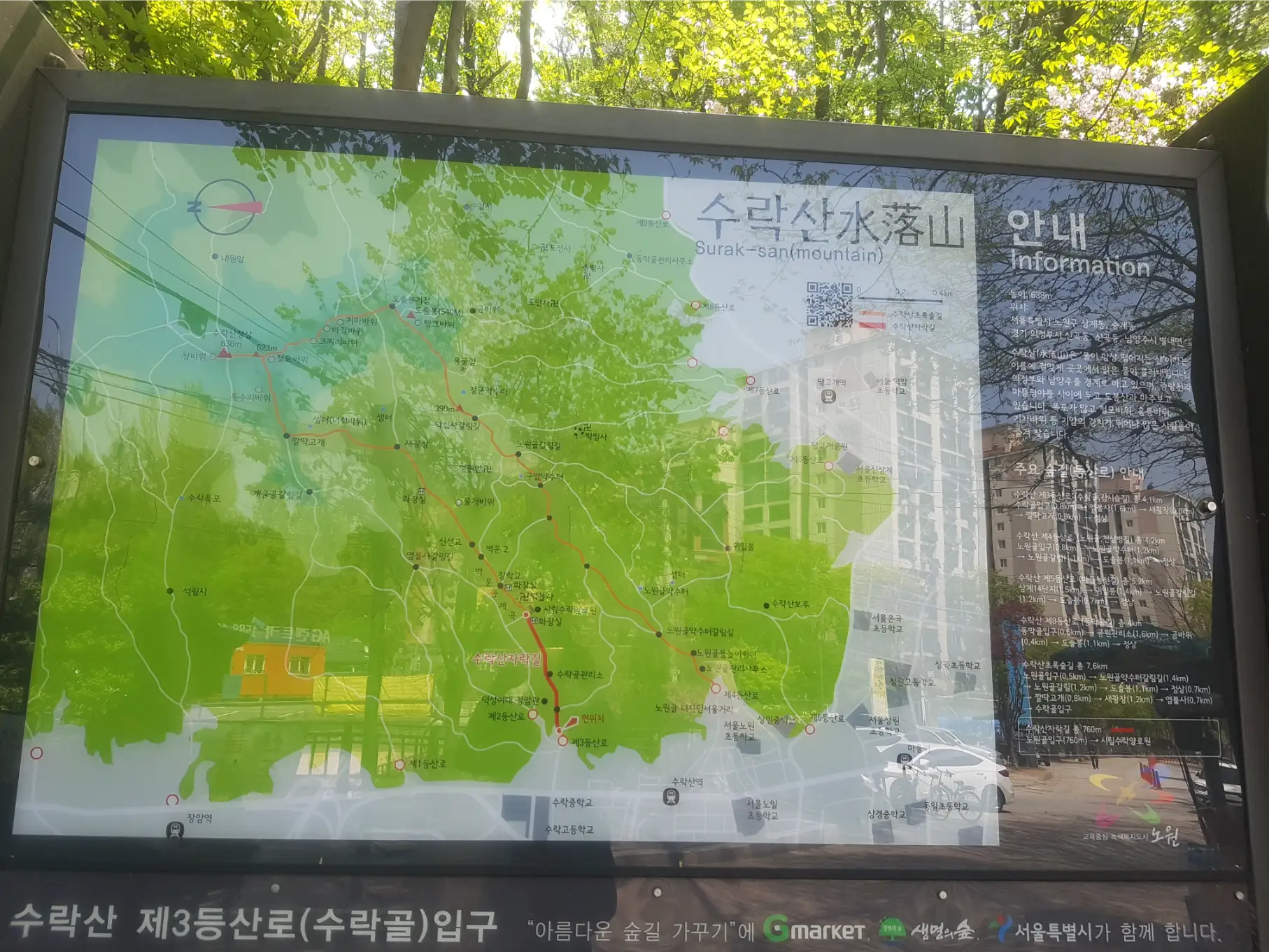
Suraksan Mountain in Autumn (September–November)
Autumn is the most picturesque season at Suraksan, with trails turning into a vibrant display of red, orange, and gold foliage. The crisp air and stunning views make this the perfect season for hiking and photography. The Mangwolsa Temple Trail (망월사 코스) offers breathtaking views of the temple, beautifully framed by colorful autumn leaves, creating a serene and picturesque scene. Meanwhile, the Danggogae Loop Trail (당고개 순환 코스) provides panoramic views of the fiery foliage blanketing the mountainsides. To avoid the crowds that flock to Suraksan during peak fall colors, consider visiting on weekdays. Bringing a light jacket is also recommended, as temperatures can drop significantly in the late afternoon.
Suraksan Mountain in Winter (December–February)
Winter brings a different kind of beauty to Suraksan, covering the peaks and trees with a soft blanket of snow. The mountain takes on a quiet, magical atmosphere, offering a peaceful retreat for those who enjoy hiking in a winter wonderland. The Suraksan Main Trail (수락산 메인 코스) offers breathtaking views of snow-covered granite formations, while the Yeongchuksan Trail (영축산 코스) provides a shorter, family-friendly hike through scenic snowy landscapes. To ensure safety on the icy paths, hikers should wear crampons or snow spikes for better traction. Dressing in warm layers, including gloves and a hat, is essential for staying comfortable in the freezing temperatures.
Facilities in Suraksan Mountain (수락산의 편의시설)
Suraksan (수락산) offers well-maintained facilities that cater to hikers of all levels. Although it is smaller in scale compared to larger national parks like Bukhansan (북한산), the available amenities ensure a comfortable and safe hiking experience. Whether you’re a seasoned hiker or a first-time visitor, Suraksan’s facilities are designed to enhance your outdoor adventure.
Information Centers (안내센터)
Suraksan’s main information centers are strategically located at key entry points, providing essential services and resources to help hikers navigate the trails with ease. These centers are great for gathering trail maps, weather updates, and important safety guidelines before beginning your hike.
Locations:
- Danggogae Station Trailhead (당고개역 등산로 입구): Ideal for first-time visitors, offering helpful information and suggested routes.
- Mangwolsa Temple Entrance (망월사 입구): A perfect starting point for those interested in cultural exploration, with trail maps and historical details about the temple and surrounding area.
Rest Areas (휴식 공간)
Throughout Suraksan, several designated rest areas provide a chance for hikers to relax, recharge, and enjoy the natural surroundings. These spots are thoughtfully placed along the trails, offering both shaded areas and scenic viewpoints.
Features:
- Wooden benches and shaded rest stops strategically placed along popular trails.
- Designated picnic areas with picturesque views, perfect for enjoying a meal in nature.
Cultural Landmarks in Suraksan (수락산의 문화유산)
Suraksan is not only a hiker’s paradise but also a place rich in cultural and historical significance. Exploring these landmarks adds a meaningful touch to your hiking journey, offering insights into Korea’s Buddhist heritage and architectural beauty.
1. Mangwolsa Temple (망월사)
Significance:
Perched on the slopes of Suraksan, Mangwolsa Temple is a serene and sacred Buddhist site that has stood for centuries. It offers visitors a tranquil retreat, allowing them to immerse themselves in both natural beauty and spiritual reflection. The temple is a popular stop for hikers seeking a peaceful break amid their journey.
How to Visit:
Hikers can take the Mangwolsa Temple Trail (망월사 코스), a moderate hike that combines nature and cultural exploration, making it a must-visit attraction in Suraksan.
2. Uiam Hermitage (의암사)
Significance:
Tucked away along the Uiam Course (의암 코스), Uiam Hermitage is a small yet picturesque spiritual retreat that offers a quiet escape from the bustling city. It provides a glimpse into Korea’s rich Buddhist traditions, with a peaceful ambiance that encourages meditation and introspection.
How to Visit:
The hermitage is easily accessible via the Uiam Course, offering a peaceful hike through lush greenery and soothing mountain streams.
3. Yeongchuksa Temple (영축사)
Significance:
Located on the slopes of Yeongchuksan Peak, Yeongchuksa Temple is a hidden gem that has served as a place of meditation and worship for centuries. Surrounded by forested landscapes and breathtaking views, it provides a serene escape for both hikers and spiritual seekers.
How to Visit:
Hikers can reach Yeongchuksa Temple via the Temple Path via Mangwolsa (망월사 사찰길 코스), which connects Mangwolsa Temple to this historical site, making it a spiritually enriching journey.
How to Get to Suraksan
Suraksan is easily accessible from Seoul via public transportation. Multiple trailheads lead to its peaks and landmarks, making it convenient for visitors to plan their hikes based on their preferences.
1. Danggogae Trailhead (Main Access Point)
- Subway: Take Line 4 to Danggogae Station.
- Access: The trailhead is a 5-minute walk from the station.
- Recommended For: Suraksan Main Trail and Danggogae Loop Trail.
- Subway: Take Line 1 to Mangwolsa Station.
- Access: Walk approximately 15 minutes to reach the trailhead.
- Recommended For: Mangwolsa Temple Trail and Yeongchuksan Peak.
Popular FAQs About Suraksan
No, Suraksan is free to access. However, some temples, like Mangwolsa, may request small donations to support maintenance.
The park is open 24/7, but it is recommended to hike during daylight hours for safety.
Spring (March–May) and autumn (September–November) are the best seasons to visit. These times offer mild weather and the most stunning natural scenery.
Guided tours are not as common in Suraksan compared to larger parks, but local hiking groups occasionally organize trips. Check online forums or apps like Meetup for group hikes.
No, camping is not permitted to preserve the environment. However, nearby accommodations in Seoul make it easy to plan day trips.
Yes, pets are allowed but must be leashed. Some trails may not be pet-friendly due to steep or rocky terrain, so choose routes carefully.
What should I bring for a hike in Suraksan?
- Comfortable hiking shoes with good grip.
- Water and light snacks.
- Seasonal gear: a light jacket for spring/autumn, rain gear for summer, or crampons for winter.









